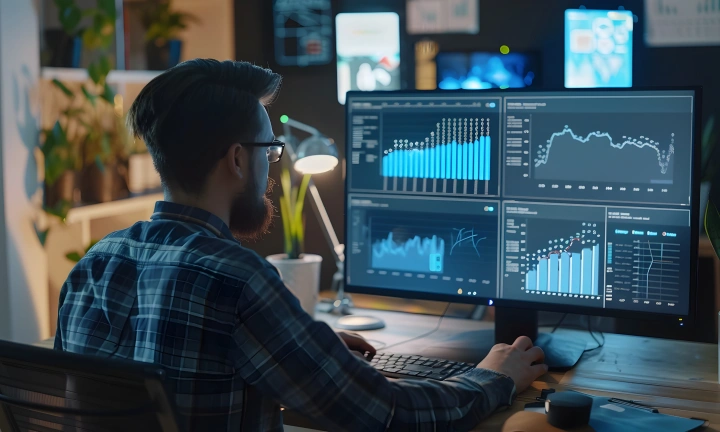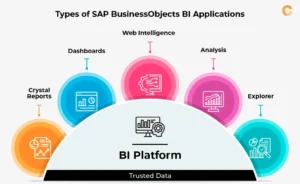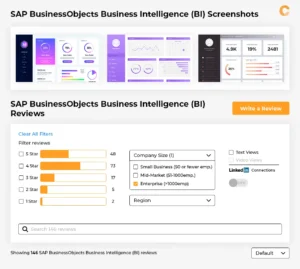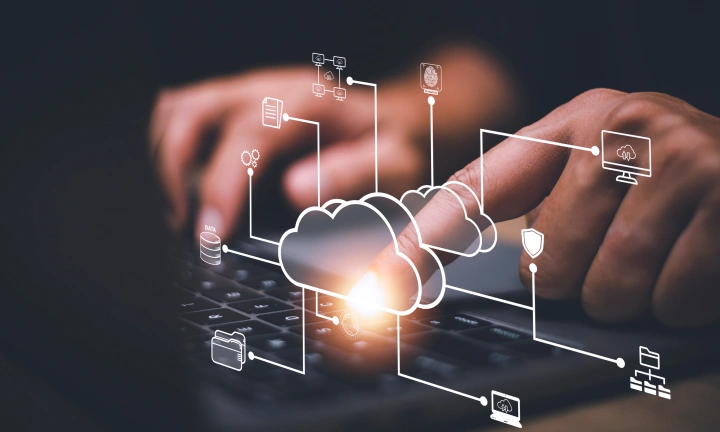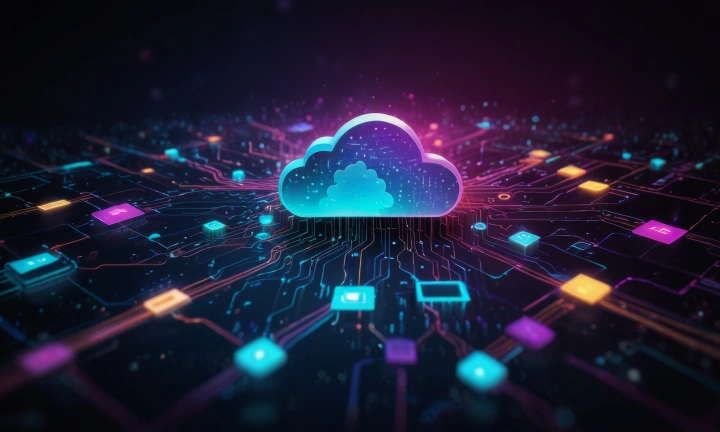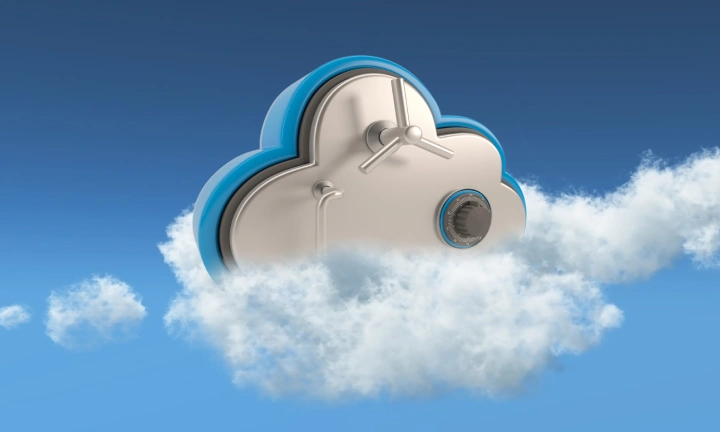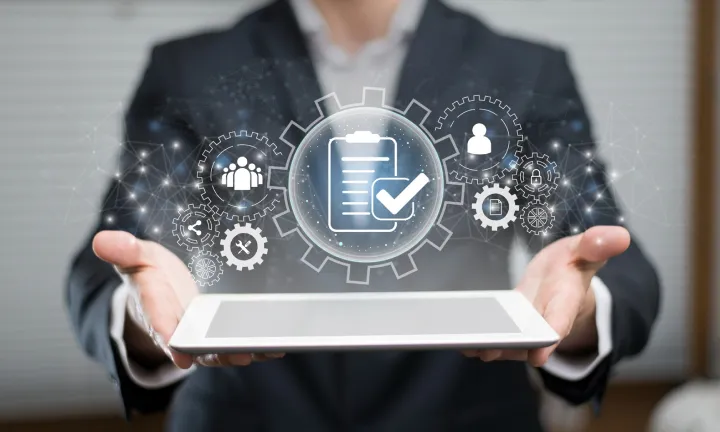Data is touted as the new gold in the digital world. Terabytes of information are now moving from physical files and folders to databases, facilitating faster decision-making. With so much data available, making sense of it comes with challenges.
Data analysts rely on software solutions to extract meaningful data to help organizations achieve fruitful results. With many formats available, data storage, extraction, and generating reliable insights pose challenges, even for analysts. Several popular tools for intelligence analysis exist, and SAP is one of the leading solution providers.
SAP is a leading data analytics solution provider that enables organizations to capture, gather, analyze, and visualize data from multiple sources. SAP BusinessObjects or SAP BusinessObjects Software is one of its top BI offerings and comes with a centralized data reporting, visualization, and sharing suite. SAP BOBI is an on-premise BI on top of SAP’s Business Technology Platform. SAP BO Report enables users to find data insights at lightning speed.
SAP BO is seen heading toward the abyss and returning for a dramatic comeback. After initially announcing its end of life, it made a “U” turn in June 2022 with a statement of direction. Codenamed “SAP BusinessObjects BI 2025”, SAP announced they’d continue to invest in the BusinessObjects BI 2025.
Understanding SAP BusinessObjects BI
Founded by Bernard Liautaud and Denis Payre in 1990, Business Objects was an enterprise software company that developed BI and SAP BO reports. In 2007, the company was taken over by the German company SAP AG and officially renamed SAP Business Objects.
Founded by Bernard Liautaud and Denis Payre in 1990, Business Objects was an enterprise software company that developed BI and SAP BO reports. In 2007, the company was taken over by the German company SAP AG and officially renamed SAP Business Objects.
The BusinessObjects BI suite helps organizations extract insights from their data. The SAP BusinessObjects Software suite includes Crystal Reports, Web Intelligence, Dashboards, and solutions such as Explorer and Lumira.
SAP BusinessObjects BI’s objective is to mainly access, analyze, and share data to create reports and dashboards and run queries for business decisions. It’s vital to drive an organization toward success by supporting it with fast, insightful decisions.
Main Applications and Products of SAP BusinessObjects BI
Crystal Reports
Crystal Reports is a reporting and data analytics application that can benefit small and medium business enterprises as well as individual customers. It helps in the creation of dynamic reports using a plethora of data sources, offering the same to various formats. One can access it from applications, web portals, or mobile devices that report both offline and online.
Web Intelligence and Webi
Another important application is Web Intelligence or Webi, a web-based browser that conducts analysis, generates formatted reports, and hands out reports on SAP BO. It can also send them to PDF or Excel.
Query as a Web Service
The Query as a Web Service (QaaWS) is a useful application tool that helps users in developing and publishing web services. You can use the web service in Crystal Reports and SAP BusinessObjects Dashboards apart from other software applications.
SAP BusinessObjects Dashboards
SAP BusinessObjects Dashboards is an application tool that helps in data visualization, allowing users to develop customized dashboards using the reports. It may include gauges, interactive charts, and widgets.
SAP Lumira
SAP Lumira is another essential application tool that helps users discover business data and develop custom-built interactive dashboards and analytics applications. You need to find and visualize the data on your own.
SAP BO Explorer
SAP BusinessObjects Explorer is similar to SAP Lumira as it also helps users to discover a large amount of data from different sources. It is also a self-service data searching tool that lets you create data visualizations and share them across various channels.
Components Not Included in BI 2025
They will remain in the BI 4.3 version, but their Mainstream Maintenance Support will end in 2025. SAP shared that the latest SAP BusinessObjects BI, BI 2025, will not include the following:
- SAP Lumira
- SAP Crystal Reports for Enterprise
- UNV universes(post BI 4.3)
- SAP BusinessObjects Universe Design Tool and .unv universes
- SAP BusinessObjects Live Office
- SAP BusinessObjects Analysis, Edition for OLAP
- Multi-source universes and associated connectivity
- SAP BusinessObjects Mobile
- Live Office and Universe Design Tool (and .unv)
Also, it will no longer be supported in SAP BusinessObjects Software; migrating to UNX is advisable.
Deep Dive into SAP BusinessObjects Universe
A SAP BusinessObjects Universe simplifies a data source and presents data to users in non-technical terms. By configuring middleware drivers for the data sources, you can create a single-source relational or OLAP universe for SAP BusinessObjects Software.
The Universe integrates metadata layers defining the data structure, allowing users to query data to generate custom reports. Data is accessible with predefined queries, SAP BO reports, or custom queries created using familiar business terms.
SAP BusinessObjects Universe does a great job of automatically generating complex SQL queries for user requests. Avoiding hardcoding queries filters the inputs, and the output is closer to what the users requested.
Evaluating the Good and the Bad of SAP Business Intelligence
Pros of SAP Business Intelligence
A large organization like SAP has spent much time researching the interfaces and tools that would make business intelligence easy, convenient, and useful. Users’ functional and performance testers test SAP products to ensure that the end users can make sense of data quickly and efficiently. SAP’s decades of expertise give users a powerful suite to drive business success.
The user interface of SAP Business Intelligence is meant to reduce the user’s time and effort in reaching the desired result or action. It is straightforward to use. Another benefit of SAP Business Intelligence is quick access to all tools from a single interface.
By providing powerful and intuitive tools, SAP BI tools reduce dependency on tech teams. BusinessObjects has self-service tools to customize data extraction, reduce maintenance costs, and save time when creating complex SAP BO reports.
Why a business organization should look to choose SAP Objects BI:
- Offers the Best Analytics Reporting Tool
- Highly Scalable Architecture
- SAP HANA and SAP Business Warehouse native support
- Robust Security and System Administration
- Benefits of the BO Universe
- Offers Tools for Each Case
- SAP Data Servies
- Launchpad with Enterprise BI
- Mobile BI
Cons of SAP Business Intelligence
Licensing costs and pricing
Largely built for enterprise corporations, SAP Business Intelligence works wonders to sort, organize, and deduce patterns and insights for better decisions. However, this powerful capability can come at a high cost for small businesses. Hiring individuals who can get the most out of technical SAP BusinessObjects software for functional excellence is costly.
Customer support and platform administration challenges
With a heavy investment in a tool like SAP BusinessObjects, you can expect a quality response from the company. However, there has been general feedback about the company needing to be faster in customer support responses. Getting accustomed to SAP BI requires a steep learning curve that may deter people from getting on board sooner on the new system. The complex platform administration makes it challenging without the right training.
Integration and performance issues
Even with out-of-the-box integration capabilities, existing systems can have problems with seamless integration with existing systems.
Looking Ahead: SAP BusinessObjects BI 2025
Making its intention clear, SAP shared that it will continue to develop and invest in SAP BusinessObjects Software and introduce BusinessObjects BI 2025. By working on powerful core features like SAP BO report generation, access to information, and integration with ever-more-complex landscapes, SAP BusinessObjects BI 2025 is expected to gain users’ trust with its enhanced capabilities.
SAP has not abandoned the on-premise BI suite by showing its support for continuing with it or moving to SAP Analytics Cloud (SAC) or SAP Private Cloud Edition (PCE). SAP intends to release the first version of SAP BusinessObjects BI 2025 in Q4 2024 and continue mainstream support until 2029 and 2031 for priority one support. SAP has kept both deployment options open for the end users: Cloud-based like SAP BusinessObjects Private Cloud Edition and on-premise.
Implications for customers
For customers still running version 4.2, SAP recommends upgrading to version 4.3, as the former’s support will end by 2024. Version 4.3’s modern user experience brings several enhancements that enable businesses to succeed consistently.
Preparation for BI 2025
As SAP recommends upgrading to 4.3, it’s important to plan for a successful and smooth upgrade by planning the timelines and assigning resources to manage. A robust plan can reduce or limit any bottlenecks or downtime to the system. Seamless SAP HANA migration can limit downtime or affect business operations. SAP provides enterprise software solutions apt for businesses with growth ambitions.
BI 2025 represents a significant milestone in the evolution of business intelligence, highlighting the importance of staying current with technology trends. Organizations transitioning to BI 2025 can benefit from available assistance for upgrades, migrations, and SAP BO reports. This assistance can include access to resources, training programs, and consulting services to help organizations navigate the complexities of transitioning to the new BI platform.
Conclusion
SAP BI 2025 represents the new wave of data analytics with endless possibilities to reach your full potential faster and with more accurate decision-making. SAP BusinessObjects customers can choose to stay on-premise or move to the cloud. Reviewing the documentation and steps is imperative for a smooth transition to the new system.
Upgrades and migrations to SAP BI 2025 or SAP BusinessObjects BI 4.3 are easier with a SAP Partner like Accely. With SAP’s most powerful data analytics offering, bring decision-making power to your fingertips.
30+ years of experience managing large, complex SAP programs across industries, geographies, and functions. Expert in enterprise-scale transformation and program governance.
